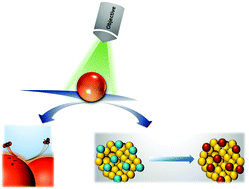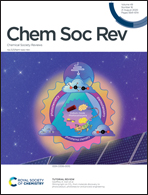Nanoscale optical imaging in chemistry
Abstract
Single-molecule-level measurements are bringing about a revolution in our understanding of chemical and biochemical processes. Conventional measurements are performed on large ensembles of molecules. Such ensemble-averaged measurements mask molecular-level dynamics and static and dynamic fluctuations in reactivity, which are vital to a holistic understanding of chemical reactions. Watching reactions on the single-molecule level provides access to this otherwise hidden information. Sub-diffraction-limited spatial resolution fluorescence imaging methods, which have been successful in the field of biophysics, have been applied to study chemical processes on single-nanoparticle and single-molecule levels, bringing us new mechanistic insights into physiochemical processes. However, the scope of chemical processes that can be studied using fluorescence imaging is considerably limited; the chemical reaction has to be designed such that it involves fluorophores or fluorogenic probes. In this article, we review optical imaging modalities alternative to fluorescence imaging, which expand greatly the range of chemical processes that can be probed with nanoscale or even single-molecule resolution. First, we show that the luminosity, wavelength, and intermittency of solid-state photoluminescence (PL) can be used to probe chemical transformations on the single-nanoparticle-level. Next, we highlight case studies where localized surface plasmon resonance (LSPR) scattering is used for tracking solid-state, interfacial, and near-field-driven chemical reactions occurring in individual nanoscale locations. Third, we explore the utility of surface- and tip-enhanced Raman scattering to monitor individual bond-dissociation and bond-formation events occurring locally in chemical reactions on surfaces. Each example has yielded some new understanding about molecular mechanisms or location-to-location heterogeneity in chemical activity. The review finishes with new and complementary tools that are expected to further enhance the scope of knowledge attainable through nanometer-scale resolution chemical imaging.



 Please wait while we load your content...
Please wait while we load your content...